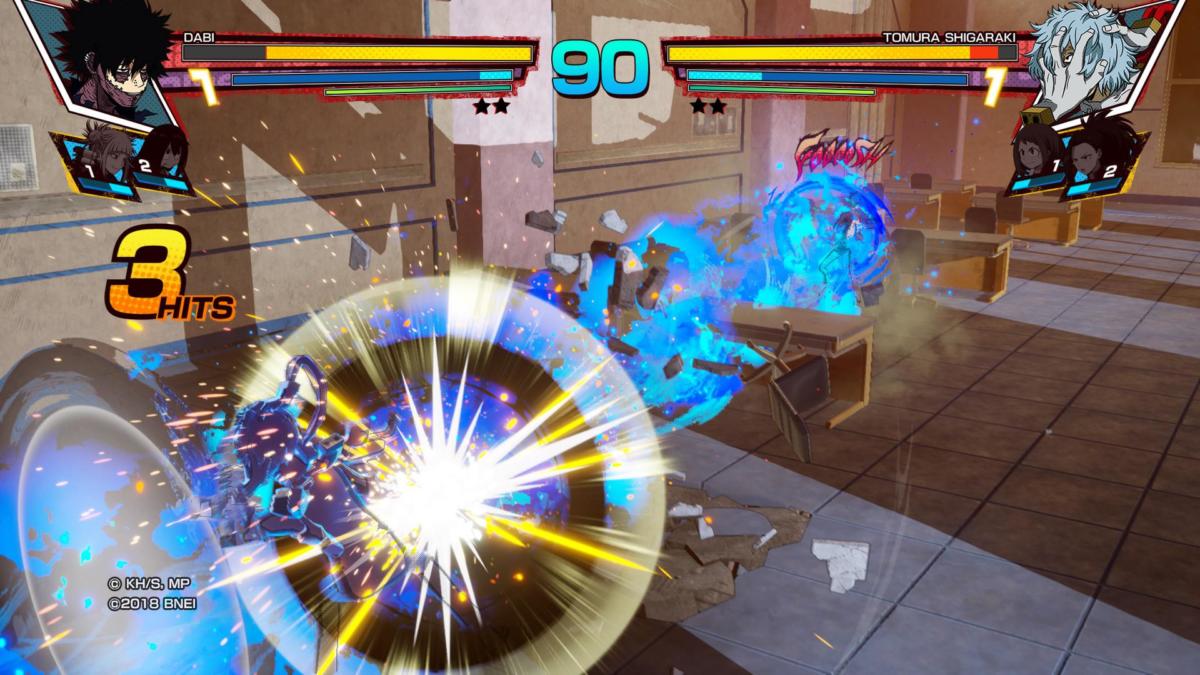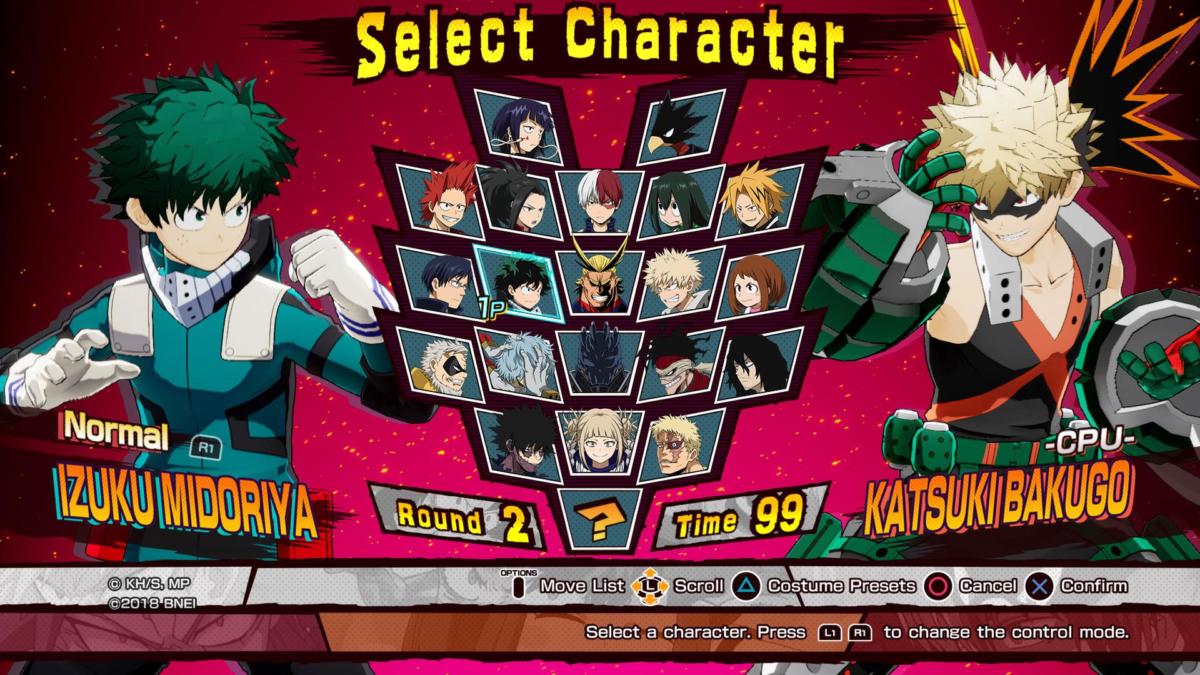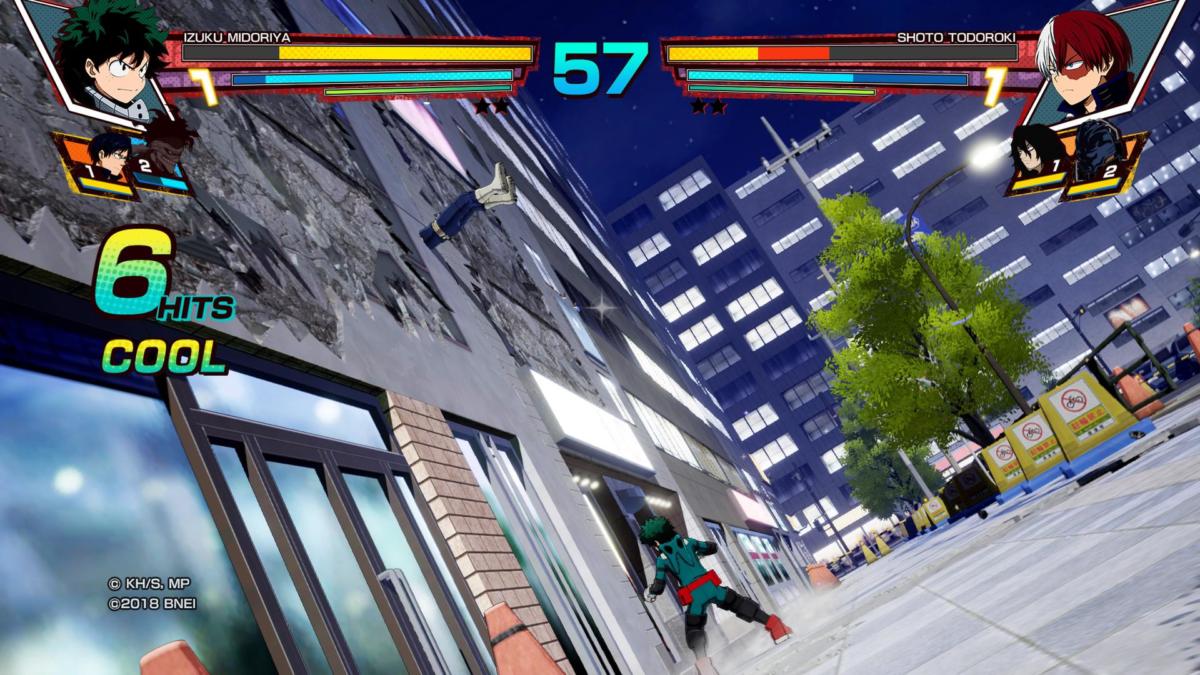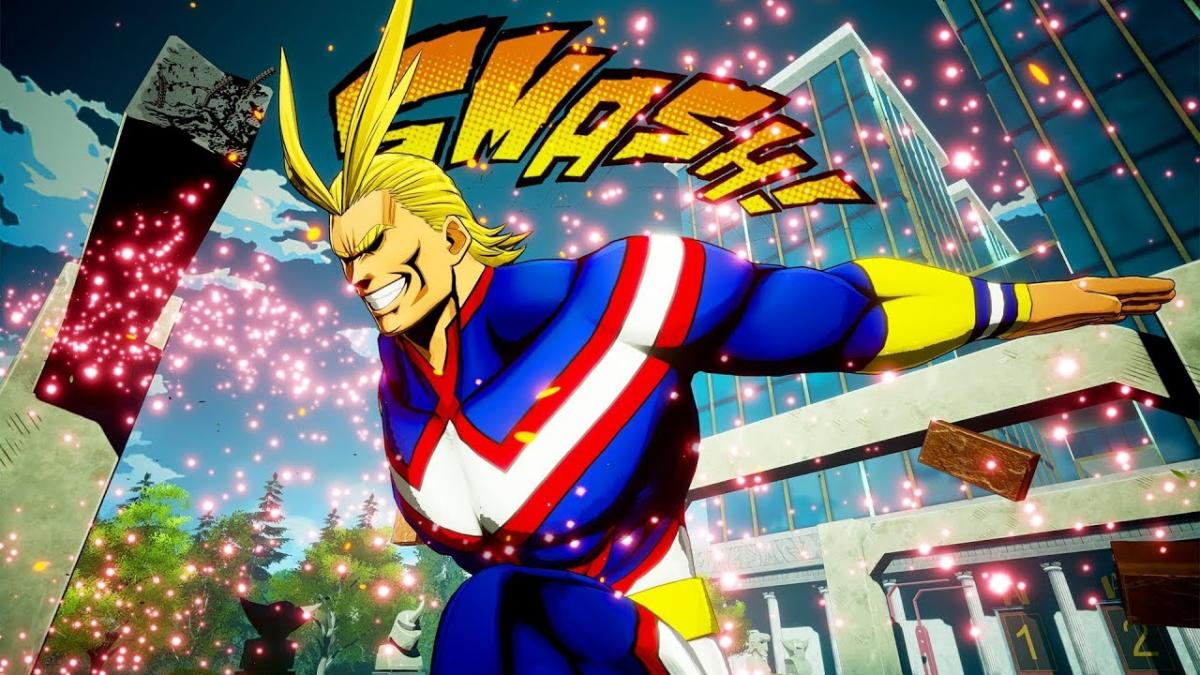Developer: Bandai Namco
Publisher: Bandai Namco
Platform(s): PS4, XB1, PC, Switch
Review copy purchased
Having recently wrapped up its third season, dropped its first movie a few months ago and quickly asserting itself as one of the most popular and acclaimed new anime series’ this side of Attack on Titan, My Hero Academia is the new show on the block that everyone is talking about. A video game adaptation was certain to not be far behind. In fact, the show is so popular in Japan alone that the characters were used to promote Avengers: Infinity War in the country.
To overly simplify the plot of My Hero Academia would be doing it a massive disservice, but it is, in short, the anime equivalent of Marvel’s X-Men minus all the racial/class subtext. In this world, heroes and villains are everyday occurrences. Those who are born with powers, or Quirks as they are known here, head off to super hero high school, U.A High, where they learn the basics of heroics and mastering their quirks.
The main story follows Izuku Midoriya, aka Deku, who is born quirkless (without power) but longs for nothing more than to emulate his hero, All Might, the number one hero of this world. A chance encounter with his idol sees Midoriya inherit All Might’s powerful quirk, One For All, and set upon his quest to become the number one hero.
Released by Bandai Namco, who have previous form with many big anime titles including Naruto, One Piece and Dragon Ball Z, My Hero One’s Justice is the first big multi-platform release for MHA outside of Japan, and with such hype around the show, an appropriately incredible game is what fans of the show will be no less expecting. Whilst the gameplay itself won’t quite be the spectacle many of My Hero’s followers will be after, it is a fun game that holds up in most regards nonetheless.
My Hero One’s Justice’s core gameplay is a one-on-one 3D arena fighting game, where players can choose from a roster of 20 characters, mixing between the shows more prominent and popular heroes and villains. The fighting itself is pretty simplistic, with not much more to get your head around other than standard combo attacks, alongside quirk attack variations, dashing and guarding. After a match or two in practice, it’s pretty easy to pick up and play, although it doesn’t take much to fall on the side of button mashing to execute decent enough combos.

Most characters play differently enough, (I personally took to using Todoroki for the most part, who balanced ranged offense and close-quarters defence pretty well) but some can be exploited for annoying, yet awfully effective spam attacks. For example, Dabi, who through mashing the triangle button can fire off unavoidable homing fireballs without much effort. Similarly, Shigaraki, if played like an utter swine, has a devastating grab attack which, if landed four times on your opponent, will instantly kill them, regardless of health left.
The attacks themselves come in three styles: normal attacks, counter-attacks and unblockable attacks. Normal attacks are the bread and butter of the game, achieved by hammering the square button. Counters, alternately, beat the normal attacks and unblockables can beat counters. In all honesty, facing the game’s AI opponents won’t offer too great a challenge and won’t require an in-depth mastery of each character’s play style, save for one or two missions where the enemies attacks are buffed considerably, but it will be rare to ever find yourself overwhelmed. That said, it does encourage time to be spent learning the ropes for local and online play.
I did enjoy seeing the bigger Quirk attacks play out, though, activated by pressing R1 + triangle/circle depending on how full your attack gauge bar is. However, givenhow damaging most of the standard combos can be, you won’t often have more than one or two chances per match to activate an Ultimate Quirk before defeating your enemy from other attacks. The quirks did have some fun touches though, such as Midoriya’s sleeve and gloves being blasted off when firing his Delware Smash move.
You can also recruit two characters as sidekicks during battles, launching their attacks with a press of L2 or R2, which can be useful in a pinch, and all environments are full destructible, which adds to the weight and power of each characters attacks. That said, seeing a character launched into a wall with their legs sticking out and kicking around did come across quite hokey and took me out of the action whenever it happened, despite offering a free combo opportunity.

While the art and fighting itself do look colourful and exciting enough upon the first handful of matches, and discovering the different ultimate quirk moves was fun, the allure wears thin after an hour or two. The combat does come across as more style over substance and not as accomplished and rewarding for your time and effort like Dragon Ball FighterZ.
The main feature of One’s Justice comes in the game’s story mode, which picks up about halfway through season two of the anime, the Hero-Killer ‘Stain’ arc, and concludes around the midpoint of season three, the All For One arc, effectively brushing over the majority of the first season. Whilst the majority of the battles in the show do take place between this period, it is still an odd choice, especially if you’ve never seen My Hero Academia before. I couldn’t help but think throughout my time in the story mode that this game was never really meant to appeal to the more casual fan, as without prior knowledge, a lot of details would be lost.
This isn’t to say that One’s Justice skips over everything, as the story is covered between missions via voice-over recaps and images from the show, often told from the different characters perspectives who were present, but, again, for fans of the show, the game doesn’t offer much new information than what you’ve already seen from the anime itself.
A quick pre-warning to anyone who fancies the English dub though, as, at the time of review, One’s Justice did not offer any English translation options outside of subtitles for the cutscenes. The returning Japanese cast, however, do all deliver energetic and praiseworthy performances nonetheless.

There are some side missions, or ‘What If’ missions as they are titled throughout, but these felt more like padding to the already established timeline of events than anything else. Some missions were nothing more than videos to be watched, which whilst not a massive issue, did seem a bit cheeky to class them as actual missions when all you have to do is just watch a minute long video that ends up giving you what is basically a free S-Rank.
Mission success is dependent on three factors: completing the mission, gaining an S-Rank and completing a secret objective. Success in each of these fields will unlock a new custom clothing item, which we’ll get onto in just a moment, and is really to encourage replaying the story missions, but it really isn’t necessary. Not to mention it can be a real head scratcher figuring out just what exactly the secret mission requirements are, when the game gives you absolutely no clue. Some are as simple as winning by K.O, whereas others are more obscure, like win a match with an ice attack, or win a match without guarding. These two, for example, I only found out about from sheer luck of just how those specific story missions played out for me.
Mission rankings are based on your given from an E-Rank, being the lowest, up to an S-Rank being highest. Higher rankings earn you more in-game currency, which can only be spent on customisable options to kit out the roster with different aesthetic items, such as glasses, kneepads or varying headwear just to name a few. Unfortunately, these clothing items offer no perks and gameplay advantages at all, making playing to unlock all of them feel like a huge chore than a necessity. It really feels like massively wasted opportunity to not have any form of ‘create a hero/villain’ option in the game when so much time has been put into customisation throughout the other modes.
One Justice’s Mission Mode was an enjoyable break from the story, which sees you assemble a roster of three characters to tackle six different maps, each with increasing difficulty. This offered much more of a challenge overall and encouraged me to fight more tactical. In this mode, damage you take in one match will carry over to the next, but you can win certain items that grant perks depending on your ranking, such as restoring team health or increasing your damage output. Beating the maps will level up your chosen characters stats, meaning they’ll be better equipped to handle later missions.

At the time of writing, the online mode was all but non-existent and I was completely unable to get into any matches.
I did appreciate how, in all, One’s Justice did remain true to the source material. The battle arenas, whilst few in number, were faithfully recreated and I always felt like every character, in their design, movements and fighting quirk styles, certainly stayed true to their characters, feeling like how they would actually attack in a battle. For instance, Iida has an extended dash which matches his speed-based quirk, and Muscular’s attack power is much greater in closer combat. A small touch, but one that rewards experimenting with the 20-strong roster and does make the characters feel like they could all stand a chance against each other.
It is a shame that One’s Justice wasn’t able to add in any of the other U.A High cast or League of Villains roster, like a playable Nomu or Endeavour. They do exist with in the game, but they’re merely referenced through custom items, which may disappoint the more loyal fan.
My Hero One’s Justice is a fun first-entry into the world of My Hero Academia and does offer glimpses of what Bandai Namco can do with this franchise to make future instalments even better. However, a basic combat system, lack of online and a strange choice of setting their story mode halfway through the shows second season make this hard to recommend at full price to complete newcomers of this show. The art style is great and the game certainly has potential, but doesn’t make up for what is ultimately quite a shallow fighting game, where other anime fighters like Dragon Ball FighterZ truly excel.
Some of the coverage you find on Cultured Vultures contains affiliate links, which provide us with small commissions based on purchases made from visiting our site.

